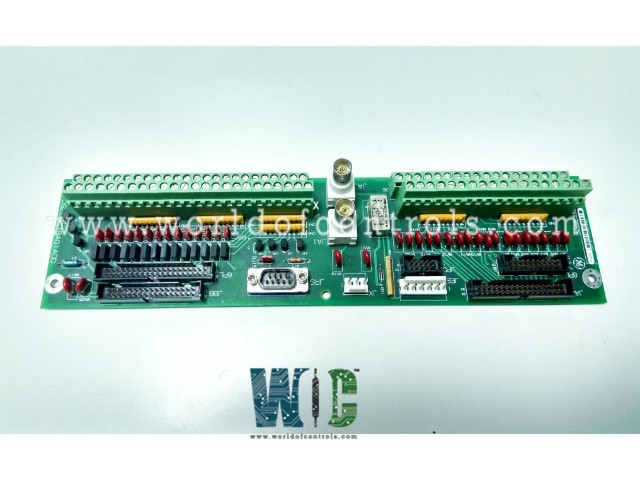
World Of Controls understands the criticality of your requirement and works towards reducing the lead time as much as possible.
DS200CTBAG1AAB - Analog Termination Board is available in stock which ships the same day.
DS200CTBAG1AAB - Analog Termination Board comes in UNUSED as well as REBUILT condition.
To avail our best deals for DS200CTBAG1AAB - Analog Termination Board, contact us and we will get back to you within 24 hours.
Part No.: DS200CTBAG1AAB
Manufacturer: General Electric
Country of Manufacture: United States of America (USA)
Temperature: -30 to + 65oC
Product Type: Analog Termination Board
Availability: In Stock
Series: Mark V
DS200CTBAG1AAB is an analog termination board developed by GE. It is a part of Mark V control system. The Analog Termination Module is located in the R5 core of the system. It serves as a central hub for various analog signals and connections, facilitating communication between different parts of the control system. The module is responsible for monitoring the power source from the Mark V LM system. This connection, originating from the TCPD board in PD, ensures that the CTBA module has access to vital power information, enabling it to operate effectively and reliably. A bypass relay is integrated into the module to ensure continued communication via the COREBUS even in the event of power loss to the CTBA. This redundancy mechanism enhances the resilience of the system, ensuring that critical communication pathways remain operational during unexpected power disruptions.
The WOC team is always available to help you with your Mark V requirements. For more information, please contact WOC.
What is DS200CTBAG1AAB?
It is an analog termination board developed by GE under the Mark V series.
What are the functions of connectors BJ1 through BJ14 on the module?
Connectors BJ1 through BJ14 on the module connect the NEG terminal of the respective mA input to DCOM. This configuration ensures proper grounding and signal integrity for each mA input, allowing for accurate measurement and monitoring of analog signals.
How do connectors BJ1 through BJ14 contribute to signal processing in the module?
Connectors BJ1 through BJ14 establish the electrical connection between the NEG terminal of each mA input and DCOM. By grounding the NEG terminal, these connectors help minimize noise and interference, ensuring reliable and accurate signal processing within the module.
What is the purpose of connector BJ15 on the module?
Connector BJ15 on the CTBA module connects the RS232 Monitor Port (TIMN) to DCOM. This connection allows for communication with the RS232 Monitor Port, facilitating monitoring and diagnostic activities. By linking the RS232 Monitor Port to DCOM, users can access and analyze data transmitted through the port effectively.